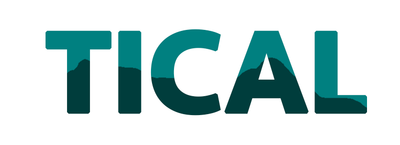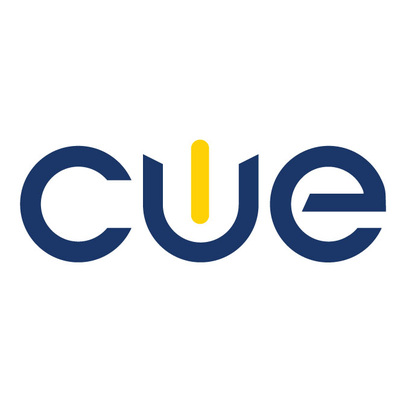Future Ready California Partners
As the joint creators and producers of the Leadership 3.0 Symposium for the last decade, ACSA, CUE and TICAL were natural choice to lead the Future Ready Schools effort in California.
About the EffortFuture Ready Schools is a free, bold effort to maximize digital learning opportunities and help school districts move quickly toward preparing students for success in college, a career, and citizenship. The effort provides districts with resources and support to ensure that local technology and digital learning plans align with instructional best practices, are implemented by highly trained teachers, and lead to personalized learning experiences for all students, particularly those from traditionally under-served communities.
The Alliance for Excellent Education and the U.S. Department of Education are leading this effort with the support of the Leading Education by Advancing Digital (LEAD) Commission and a vast coalition of organizations.
What Is Future Ready Schools?View components of a Future Ready learning environment and get involved! At the center of the effort is a series of regional summits where district teams utilize the Future Ready Dashboard to develop action plans and metrics to measure their progress in using digital tools to improve teaching and student learning outcomes. The summits focus on a comprehensive set of issues that drive student learning, highlight the experiences of districts in each region, and offer district leaders tangible ways to build capacity among their teams and throughout their districts. Districts can download the Future Ready Schools fact sheethere.
The Framework and Interactive Planning DashboardIn an effort to support superintendents and district leadership teams and to fulfill the Future Ready District Pledge—and determine their readiness to do so--The Alliance for Excellent Education has developed both the Future Ready Schools Framework and Future Ready Schools Interactive Planning Dashboard. The Dashboard is a free, online tool to help district leadership teams plan systemically to use technology effectively to engage students, empower teachers, and improve learning outcomes. Through the dashboard, district leaders assess their digital readiness levels, identify gaps, obtain strategies, and plan and track their progress over time. Districts can download more information about the Dashboard, here.
Why now?This effort comes at a critical time as districts embrace college and career readiness as the goal for all students and recognize the potential of digital tools to help teachers personalize learning for each student. While less than 30 percent of U.S. schools have the bandwidth they need to teach using today’s technology, federal and state efforts are expanding this capacity to ensure that at least 99 percent of the nation’s students have access to high-speed internet in their schools within the next five years. Such connectivity, along with strategic planning by districts to maximize its availability, has the potential to transform the educational experiences of all students, regardless of their background.
District leaders must respond to these changes with thoughtful planning to align necessary technologies with instructional goals to support teaching and learning.
About the EffortFuture Ready Schools is a free, bold effort to maximize digital learning opportunities and help school districts move quickly toward preparing students for success in college, a career, and citizenship. The effort provides districts with resources and support to ensure that local technology and digital learning plans align with instructional best practices, are implemented by highly trained teachers, and lead to personalized learning experiences for all students, particularly those from traditionally under-served communities.
The Alliance for Excellent Education and the U.S. Department of Education are leading this effort with the support of the Leading Education by Advancing Digital (LEAD) Commission and a vast coalition of organizations.
What Is Future Ready Schools?View components of a Future Ready learning environment and get involved! At the center of the effort is a series of regional summits where district teams utilize the Future Ready Dashboard to develop action plans and metrics to measure their progress in using digital tools to improve teaching and student learning outcomes. The summits focus on a comprehensive set of issues that drive student learning, highlight the experiences of districts in each region, and offer district leaders tangible ways to build capacity among their teams and throughout their districts. Districts can download the Future Ready Schools fact sheethere.
The Framework and Interactive Planning DashboardIn an effort to support superintendents and district leadership teams and to fulfill the Future Ready District Pledge—and determine their readiness to do so--The Alliance for Excellent Education has developed both the Future Ready Schools Framework and Future Ready Schools Interactive Planning Dashboard. The Dashboard is a free, online tool to help district leadership teams plan systemically to use technology effectively to engage students, empower teachers, and improve learning outcomes. Through the dashboard, district leaders assess their digital readiness levels, identify gaps, obtain strategies, and plan and track their progress over time. Districts can download more information about the Dashboard, here.
Why now?This effort comes at a critical time as districts embrace college and career readiness as the goal for all students and recognize the potential of digital tools to help teachers personalize learning for each student. While less than 30 percent of U.S. schools have the bandwidth they need to teach using today’s technology, federal and state efforts are expanding this capacity to ensure that at least 99 percent of the nation’s students have access to high-speed internet in their schools within the next five years. Such connectivity, along with strategic planning by districts to maximize its availability, has the potential to transform the educational experiences of all students, regardless of their background.
District leaders must respond to these changes with thoughtful planning to align necessary technologies with instructional goals to support teaching and learning.



